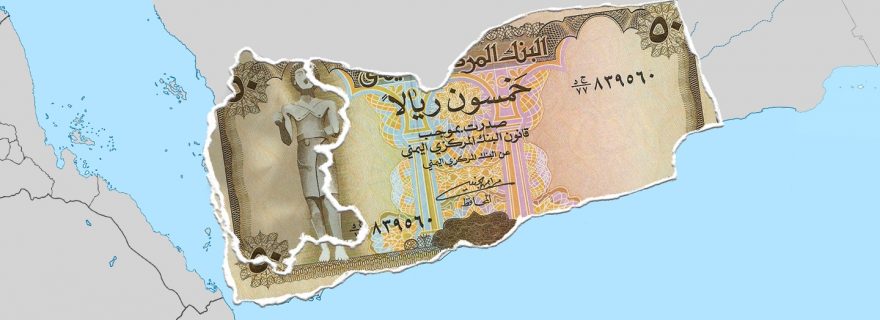When Central Banks Break Up
Central banks are supreme national economic institutions. What happens when, during a war, they become part of the power struggle? Heba Taha looks at the case of Yemen, which since 2016 has had two competing central banks, resulting in rivalling banknotes and currencies with different values.
To most people, central banks are invisible institutions. They are often depicted as independent, technocratic, and non-partisan agents. They are, however, imbued with political power and can therefore play a crucial role during periods of conflict. Central banks also form key nodes in the global economy and are arguably a core part of the technology of capitalism.
In September 2016, the government of Yemeni president Abd Rabbu Mansur Hadi announced that it was moving the central bank from the capital, Sanaa, to Aden. The announcement took place almost exactly two years after the Houthi movement took over the capital, triggering a power struggle in the country. In March 2015, Hadi called on a coalition led by Saudi Arabia to intervene in Yemen militarily and restore his government to power. The resulting war has been extremely bloody and destructive, and it continues until the present day with no end in sight. The coalition has been unable to extricate the Houthis from Sanaa. In the meantime, Hadi has sought to restore the government’s functions in the temporary capital of Aden in south. The central bank is a key institution in this process, as it is tasked not only with setting monetary policy but also paying civil servants.
The attempt to relocate the central bank was complex and was unsurprisingly resisted by the Houthis, who tried to keep the branch alive in Sanaa. They went as far as to solicit donations from the public to keep it afloat. Abd al-Malik al-Houthi, the leader of the movement, called for collective mobilization in the form of a “solidarity campaign” to prevent the bank’s collapse. In a televised speech, he called on Yemenis to finance the central bank as a form of resistance – and as a way to ensure it remains “steadfast and stable.” Donations to rescue the bank could be as small as 50 Yemeni rials (at the time, 20 cents) and could be made via text message, at the nearest post office or local bank. Reports on the Houthi-run al-Masirah channel subsequently chronicled an inflow of donations to the central bank. Men and women, it alleged, were generously giving “gifts” to the central bank, as well as deposits to current accounts, which would increase financial liquidity for the Sanaa branch of the central bank. As if to verify the legitimacy of the transactions, and perhaps its own role as a governing authority, Houthi-controlled channels released images of citizens holding up the receipts for the transaction.
Many Yemenis turned to social media to mock this crowd-funding approach; they described al-Houthi as a ‘beggar’ and the hashtag, “Do you have 50 [rials]?” was widely shared, mocking the low figure and the desperation it evoked. Jokes surfaced that the Houthi movement did not know the difference between a blood bank, which can solicit donations, and a central bank. Given the extent of poverty in Yemen, others did not see the humor, expressing outrage with the Houthis for asking for funds at the expense of the population, many of whom are on the brink of starvation.
Like the war itself, the conflict over the central bank has become protracted. With the move to Aden, the Hadi government appointed a new governor and began printing money in 2017. The Aden branch of the central bank has relied on assistance from Saudi Arabia – which deposited $2 billion to prop up the currency. The new currency in the south was banned in the Houthi-controlled north, as the Houthis have sought to defend the value of their own currency. As a result, people in the north were asked to replace their old banknotes with new ones through the central bank in Sanaa. They could either hand them over and get the equivalent in the new bank notes, or get a receipt for the money and cash later, or change the money into a digital currency through government-owned banks.
Ultimately, this fracture compromised the functionality of a central bank in Yemen while also entrenching competing arrangements for governance and sovereignty, resulting in semi-autonomous spheres of economic activity in the north and the south. Currently, Yemen has two different banknotes of the same currency, and each of these has a different exchange rate. Sending money across the country has become increasingly problematic, as people are losing a significant portion of the money in the process of transferring it.
The separation of the central bank adds another layer to the numerous disruptions in people’s lives as a result of the war. Looking closer at the role of central banks can help us understand how people experience institutions and instruments of the economy, rather than perceiving the economy as a victim of the war. These moments of aberration, furthermore, can shed new light on the inner workings of currency, authority, and economy.



0 Comments